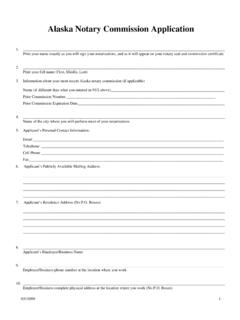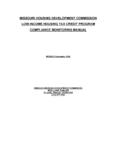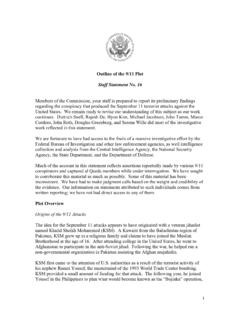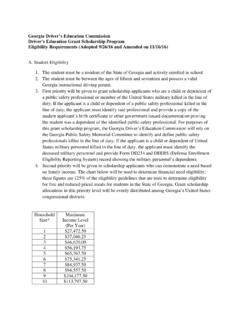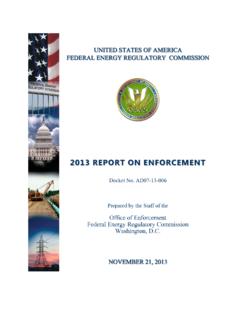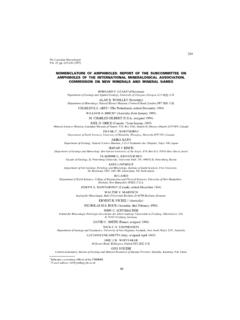Transcription of Report of the Commission to Assess the Threat to the ...
1 Report of the Commission to Assess the Threat to the united states from electromagnetic pulse (EMP) AttackCritical National Infrastructures_____For sale by the superintendent of Documents, Government Printing OfficeInternet: Phone: toll free (866) 512-1800; DC area (202) 512-1800 Fax: (202) 512-2104 Mail: Stop IDCC, Washington, DC 20402-0001 ISBN 987-0-16-080927-9 Report of the Commission to Assess the Threat to the united states from electromagnetic pulse (EMP) Attack Critical National Infrastructures Commission Members Dr. John S. Foster, Jr. Mr. Earl Gjelde Dr. William R. Graham (Chairman) Dr. Robert J. Hermann Mr. Henry (Hank) M. Kluepfel Gen Richard L. Lawson, USAF (Ret.) Dr. Gordon K. Soper Dr. Lowell L. Wood, Jr. Dr. Joan B. Woodard April 2008 CRITICAL NATIONAL INFRASTRUCTURES Table of Contents ii TTaabbllee ooff CCoonntteennttss Page vi Acknowledgements .. ix Chapter 1.
2 Infrastructure Commonalities .. 1 SCADA 1 Impact of SCADA Vulnerabilities on Critical Infrastructures: Historical Insight .. 6 Infrastructures and Their 9 Commission -Sponsored Modeling and Simulation (M&S) Activities .. 13 Summary .. 15 Recommendations .. 16 Chapter 2. Electric Power .. 17 Introduction .. 17 Description .. 20 Vulnerabilities .. 29 Test Results .. 37 Historical Insights .. 41 Distinctions .. 43 Strategy .. 45 Recommendations .. 53 Chapter 3. Telecommunications .. 62 Introduction .. 62 Telecommunications Support During Emergencies .. 64 EMP Impact on 65 Recommendations .. 79 Chapter 4. Banking and Finance .. 83 Introduction .. 83 The Financial Services 85 Vulnerability to EMP .. 88 Consequences of Financial Infrastructure Failure .. 92 Recommendations.
3 94 Chapter 5. Petroleum and Natural Gas .. 95 Introduction .. 95 Infrastructure Description .. 95 Direct Effects of EMP on Petroleum and Natural Gas 98 Petroleum Infrastructure and SCADA .. 98 Natural Gas Infrastructure and SCADA .. 99 Effects of an EMP Event on the Petroleum and Natural Gas 100 Indirect Effects of EMP: Accounting for Infrastructure Interdependencies .. 102 Recommendations .. 103 Chapter 6. Transportation Infrastructure .. 105 Introduction .. 105 Long-Haul Railroad .. 106 The Automobile and Trucking 112 Maritime Shipping .. 116 CRITICAL NATIONAL INFRASTRUCTURES Table of Contents iii Commercial Aviation .. 122 Recommendations .. 127 Chapter 7. Food Infrastructure .. 129 Introduction .. 129 Dependence of Food on Other Infrastructures .. 129 Making, Processing, and Distributing 130 Vulnerability to EMP .. 132 Consequences of Food Infrastructure Failure.
4 134 Recommendations .. 137 Chapter 8. Water 139 Introduction .. 139 The Water Works .. 140 Vulnerability to EMP .. 142 Consequences of Water Infrastructure 143 Recommendations .. 146 Chapter 9. Emergency Services .. 147 Introduction .. 147 Emergency Services Systems Architecture and Operations .. 147 Impact of an EMP 149 Recommendations .. 156 Chapter 10. Space 158 Introduction .. 158 Terms of Reference for 159 Line-of-Sight Exposure to a Nuclear Detonation .. 159 Persistently Trapped Radiation and Its 161 Nuclear Weapon Effects on Electronic 162 Satellite Ground Stations .. 167 Discussion of Results .. 168 170 Recommendations .. 171 Chapter 11. 172 Introduction .. 172 Maintaining Government Connectivity and 172 Recommendations .. 172 Chapter 12. Keeping The Citizenry Informed: Effects On People .. 176 Introduction.
5 176 Impact of an EMP 176 Recommendations .. 181 Appendix A. The Commission and Its A-1 A-1 Method .. A-2 Activities .. A-2 Appendix B. B-1 CRITICAL NATIONAL INFRASTRUCTURES Table of Contents iv LLiisstt ooff FFiigguurreess Page Figure 1-1. Typical SCADA Architecture .. 2 Figure 1-2. Generic SCADA 3 Figure 1-3. PLC Switch Actuator .. 4 Figure 1-4. EMP Simulator with Test Structures and Internal Electronics .. 5 Figure 1-5. Some of the Electronic Control Systems Exposed in Test Facility .. 6 Figure 1-6. Physical Model Used to Quantify Coupling to Different Cable Lengths in a Hypothetical Local Area Network (LAN) .. 7 Figure 1-7. A Conceptual Illustration of the Interconnectedness of Elements Contained Within Each Critical Infrastructure.. 12 Figure 1-8. Interdependency for Anticipated Network of the Future .. 14 Figure 1-9. Results of a Model Simulation.
6 15 Figure 2-1. Power System Overview .. 21 Figure 2-2. NERC Interconnections .. 25 Figure 2-3. GIC Damage to Transformer During 1989 Geomagnetic Storm .. 33 Figure 2-4. EMP 38 Figure 2-5. Test Item: Electronic 40 Figure 2-6. Flashover Observed During Injection pulse Testing .. 41 Figure 3-1. Generic Telecommunications Network 66 Figure 3-2. September 11, 2001, Blocked Call Rate Cellular Networks .. 70 Figure 3-3. Example Network Management Facility .. 71 Figure 3-4. Cellular Base Station Equipment .. 72 Figure 3-5. Routers Collecting Network Management Data .. 72 Figure 3-6. Cellular Network Testing at INL .. 74 Figure 3-7. Testing at NOTES 74 Figure 3-8. Secure Access Card and Cell 75 Figure 3-9. Percentage of Calls Completed Immediately After EMP Event .. 76 Figure 3-10. Percentage of Calls Completed 4 Hours After EMP Event .. 76 Figure 3-11. Percentage of Calls Completed 2 Days After EMP Event.
7 77 Figure 3-12. Percentage of Calls Completed at Time T (Logarithmic Time Scale) (Within EMP Contours) .. 77 Figure 5-1. Petroleum 96 Figure 5-2. Natural Gas 97 Figure 5-3. Typical SCADA Arrangement for Oil 99 Figure 5-4. SCADA Integrates Control of Remote Natural Gas 100 Figure 5-5. Examples of Oil Interdependencies .. 102 Figure 5-6. Examples of Natural Gas Interdependencies .. 102 Figure 6-1. 2003 Class I Railroad Tons Originated .. 107 Figure 6-2. CSXT Train Dispatch Center .. 108 Figure 6-3. Typical Block Signal Control Equipment Enclosure .. 110 Figure 6-4. Grade Crossing Shelter and Sensor Connection .. 110 Figure 6-5. Modern Locomotive Functional Block Diagram .. 111 Figure 6-6. A Typical Signalized Intersection .. 113 Figure 6-7. Container Cranes and Stored Containers .. 117 Figure 6-8. RTG at Seagirt Marine Terminal .. 118 Figure 6-9. Handheld Wireless Data 119 CRITICAL NATIONAL INFRASTRUCTURES Table of Contents v Figure 6-10.
8 Truck Control 119 Figure 6-11. An ARTCC Operations Room .. 122 Figure 9-1. A Generic Modern Emergency Services System .. 148 Figure 10-1. From left to right, the ORANGE, TEAK, KINGFISH, CHECKMATE, and STARFISH high-altitude nuclear tests conducted in 1958 and 1962 by the united states near Johnston Island in the mid- Pacific .. 159 Figure 10-2. Satellite Orbits Illustrated .. 159 Figure 10-3. Areas of Space Irradiated by Photons and 160 Figure 10-4. Naturally occurring belts (Van Allen belts) of energetic particles persistently trapped in the geomagnetic field are illustrated .. 161 Figure 10-5. Schematic diagram of relative intensities of trapped fluxes from two identical high-altitude nuclear detonations .. 161 Figure 10-6. Satellites remaining after a 10 MT burst over Lake Superior .. 167 Figure 10-7. Satellite ground-based receiver outage time after a 10 MT burst over Lake 167 Figure 10-8.
9 HEO satellite exposure to trapped radiation produced by Events 11, 17, and 168 LLiisstt ooff TTaabblleess Table 3-1. Telecommunications Equipment Tested .. 73 Table 10-1. Trial Nuclear 163 Table 10-2. Analysis of Satellites .. 164 Table 10-3. Probability That Satellites Suffer Damage by Direct Exposure to X-Rays .. 165 Table 10-4. Trial Events in Group 1 .. 165 Table 10-5. Trial Events in Group 2 .. 166 Table 10-6. Trial Events in Group 3 .. 166 CRITICAL NATIONAL INFRASTRUCTURES Preface vi PPrreeffaaccee The physical and social fabric of the united states is sustained by a system of systems; a complex and dynamic network of interlocking and interdependent infrastructures ( critical national infrastructures ) whose harmonious functioning enables the myriad actions, transactions, and information flow that undergird the orderly conduct of civil society in this country.
10 The vulnerability of these infrastructures to threats deliberate, accidental, and acts of nature is the focus of greatly heightened concern in the current era, a process accelerated by the events of 9/11 and recent hurricanes, including Katrina and Rita. This Report presents the results of the Commission s assessment of the effects of a high altitude electromagnetic pulse (EMP) attack on our critical national infrastructures and provides recommendations for their mitigation. The assessment is informed by analytic and test activities executed under Commission sponsorship, which are discussed in this volume. An earlier executive Report , Report of the Commission to Assess the Threat to the united states from electromagnetic pulse (EMP) Volume 1: Executive Report (2004), provided an overview of the subject. The electromagnetic pulse generated by a high altitude nuclear explosion is one of a small number of threats that can hold our society at risk of catastrophic consequences.



